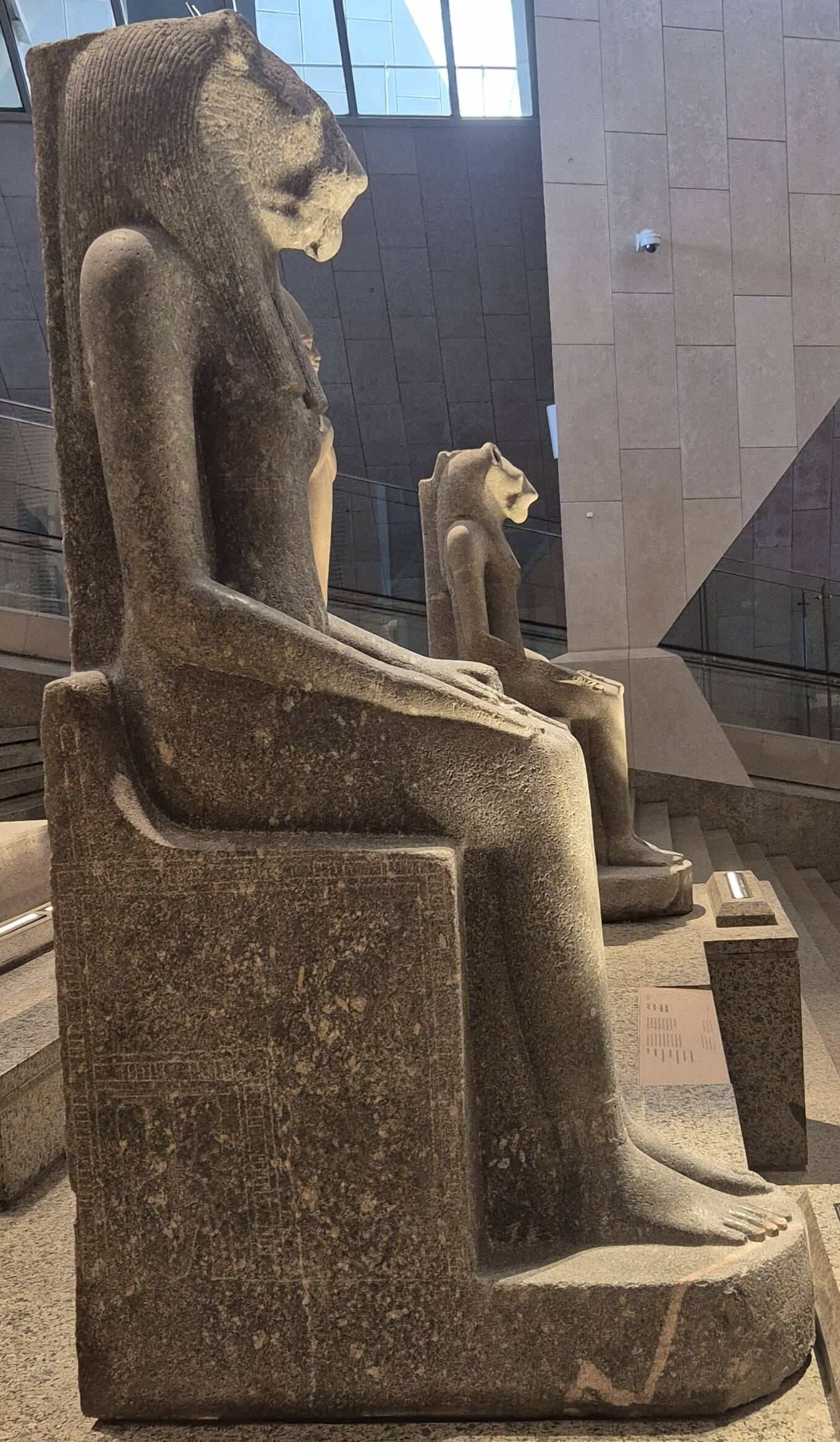
GEM 45251
Seated Statues of Goddess Sekhmet
Before you are two seated statues of Sekhmet, one of ancient Egypt’s most formidable deities. Her name, meaning "the Powerful One," reflects her fierce nature as a goddess of war, fire, and destruction. However, Sekhmet was also seen as a protective figure, capable of healing and safeguarding the pharaoh. This duality made her worship central in the reign of King Amenhotep III, during Egypt’s New Kingdom around 1390–1352 BCE.
King Amenhotep III commissioned an astonishing 365 statues of Sekhmet—one for each day of the year. These statues were believed to ensure the goddess’s daily appeasement and secure the king’s favor and protection. Most of these statues were placed at his mor ... Découvrez plus avec Premium !
Débloquez toute l'histoire de cet artéfactPassez à Premium pour accéder à la description complète, aux guides audio et au contenu exclusif de tous les artéfacts.Accédez à l'audio complet et à la description des principales œuvres du GEM pour seulement 1,99 $
Vous cherchez un autre artéfact ?